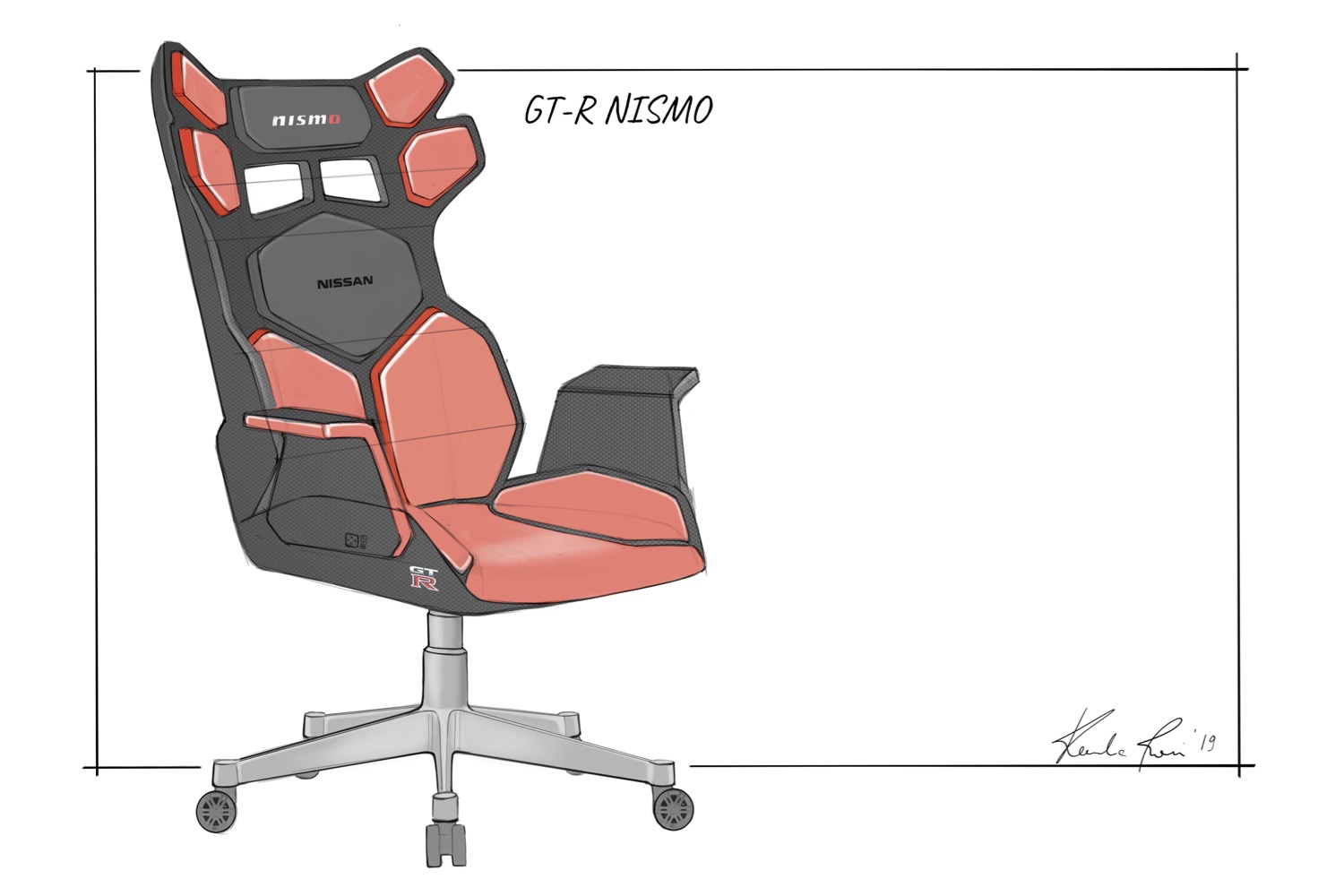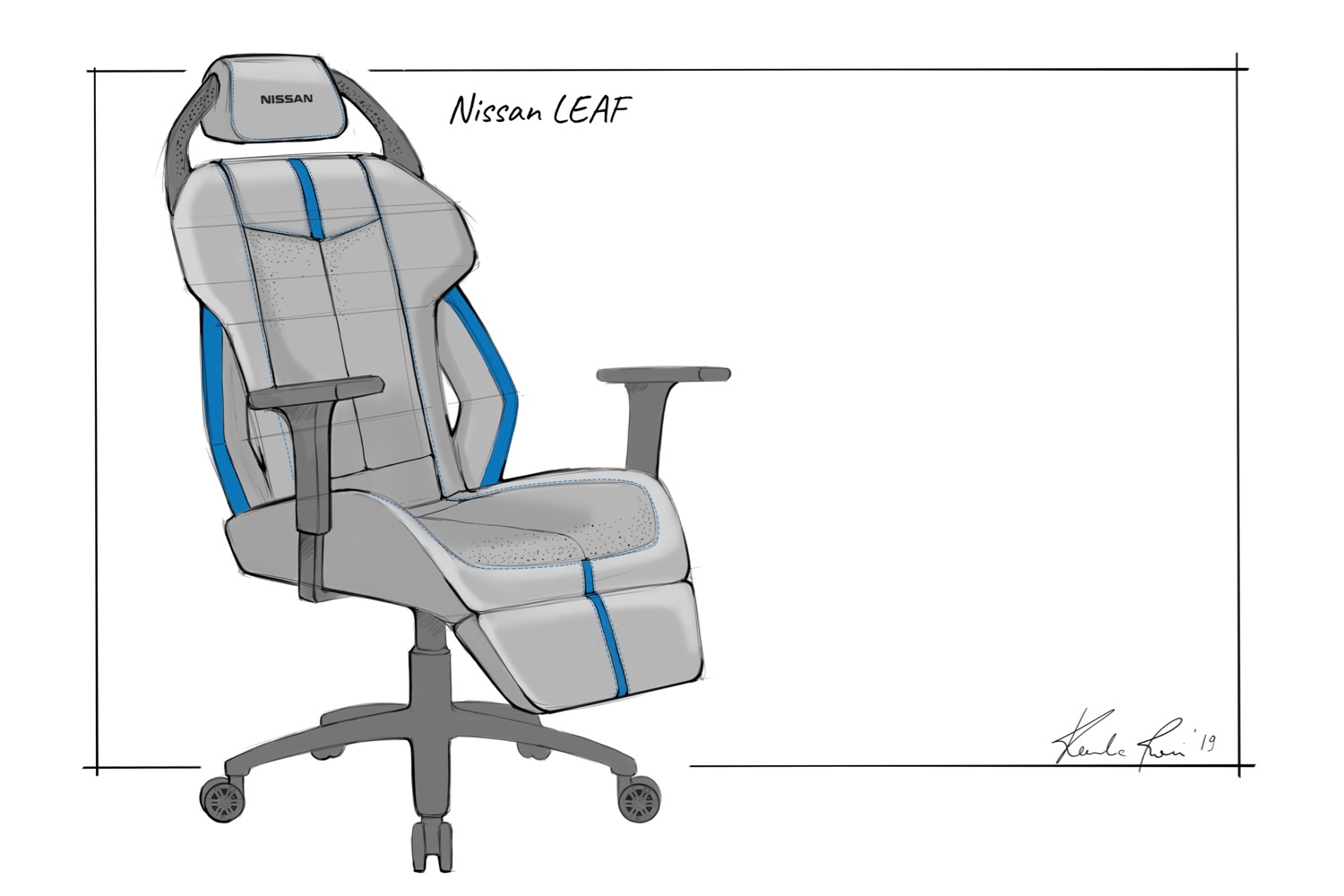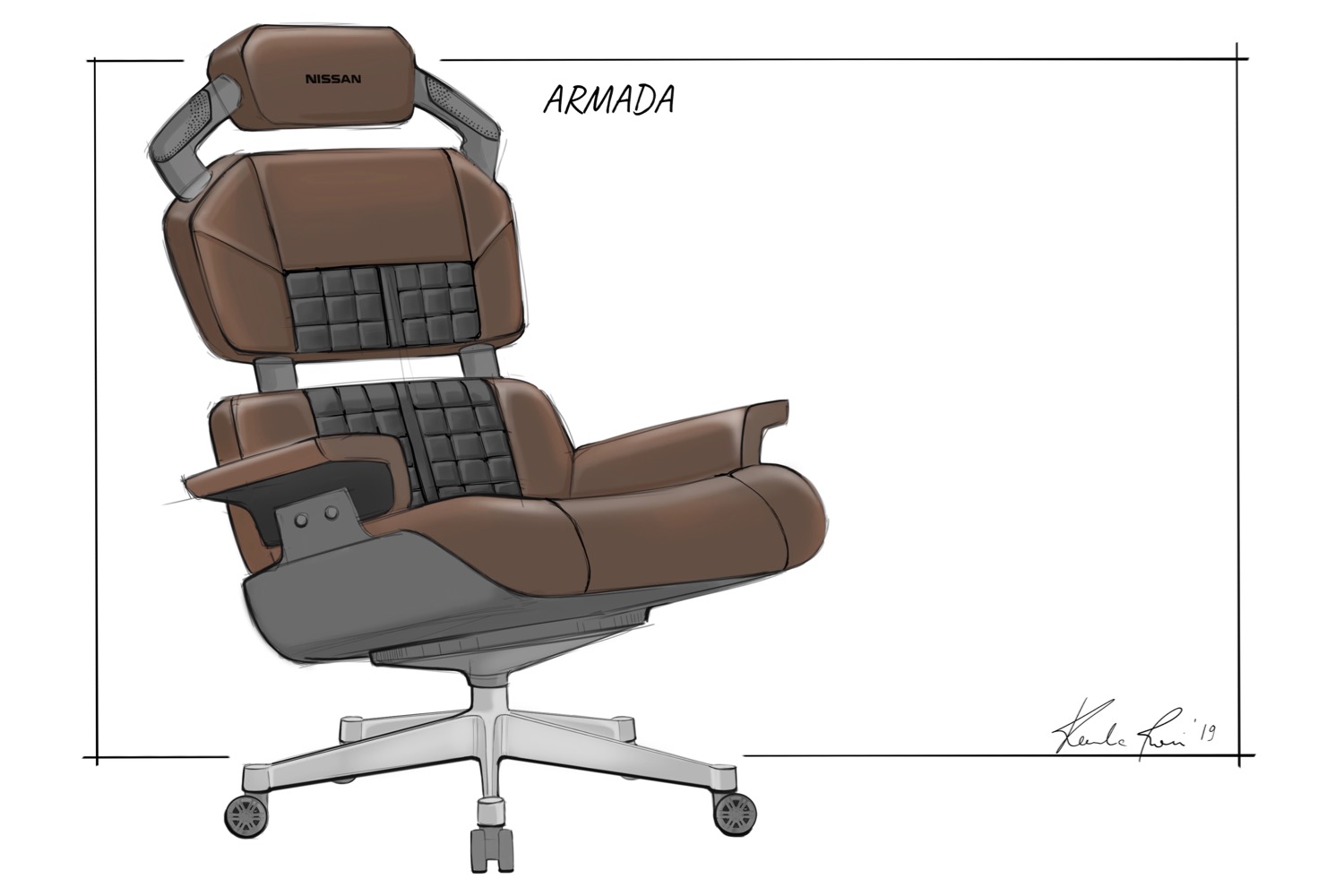Drivers and gamers have one thing in common: They spend a lot of time sitting down. Automakers put countless hours into designing comfortable car seats, so Nissan figured it could apply some of that expertise to design chairs for e-sports players. In honor of National Video Games Day, the automaker unveiled three gaming chairs, each inspired by a specific car.
The GT-R Nismo (short for “Nissan Motorsport”) is Nissan’s performance flagship, so the chair inspired by it was made from lightweight carbon fiber and aluminum, with an overall shape based on seats used in race cars. The chair is upholstered in red leather and synthetic suede — materials typically found in performance cars. The GT-R Nismo is propelled by a 3.8-liter twin-turbocharged V6 making 600 horsepower, but gamers using this chair will have to settle for foot power.
The Nissan Leaf electric car inspired another design. The light gray leather with electric blue inserts references the interior of the Leaf, while the Gun Metal painted surfaces seem to be a nod to the one-off Leaf Nismo RC racer. The chair also features integrated leg rests and USB ports.
Nissan’s third design was inspired by the Armada SUV. The Armada (which is sold as the Nissan Patrol in other markets) is both Nissan’s most expensive SUV and the one with the most off-road capability. Like the actual seats in the top Platinum Reserve trim level of the Armada, the gaming chair is upholstered in black and brown leather, and both features built-in climate control (including heating and cooling) and lumbar support.
Nissan has no plans to put these gaming chairs into production, but the automaker is still involved in the gaming world. Earlier this year, Nissan announced partnerships with gaming teams Faze Clan and OpTic Gaming. Prior to that, the automaker ran GT Academy, which offered Gran Turismo players the opportunity to become real-world racing drivers (the program is no longer active in the United States). Nissan owes a big debt to video games, as Gran Turismo introduced U.S. fans to the GT-R long before the sports car was sold on this side of the Pacific.





